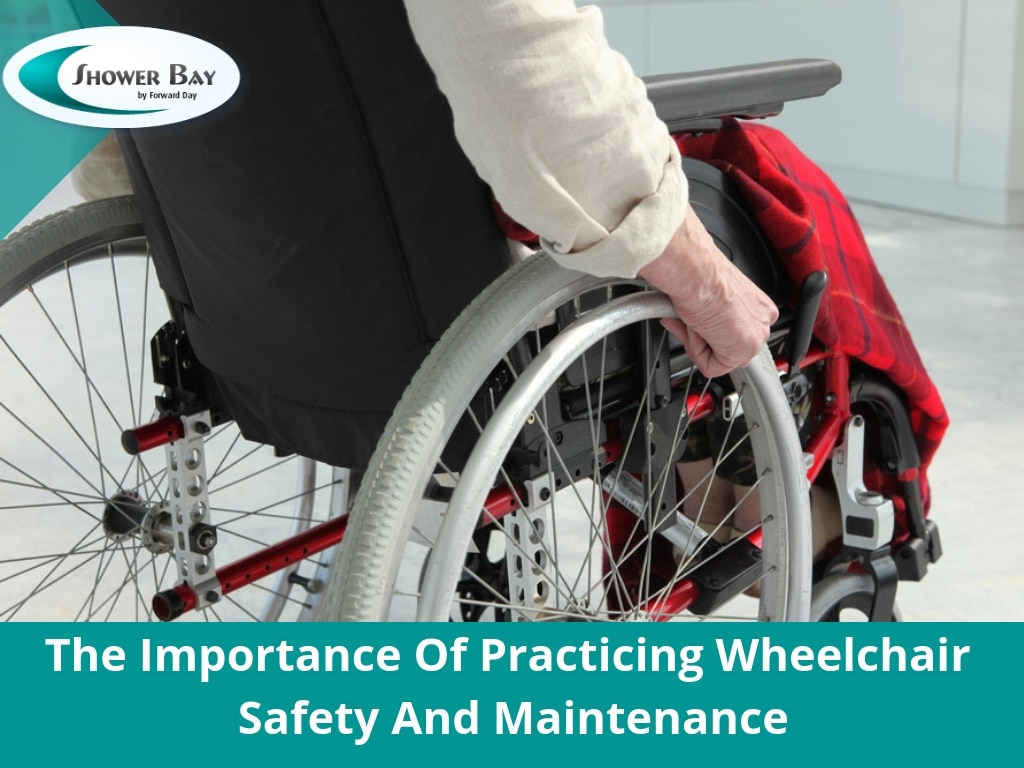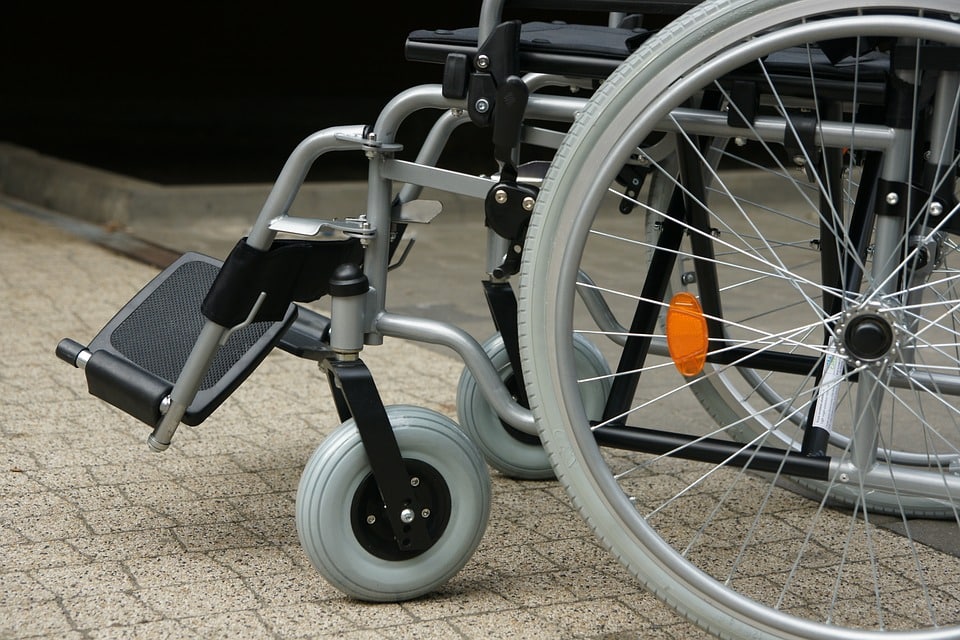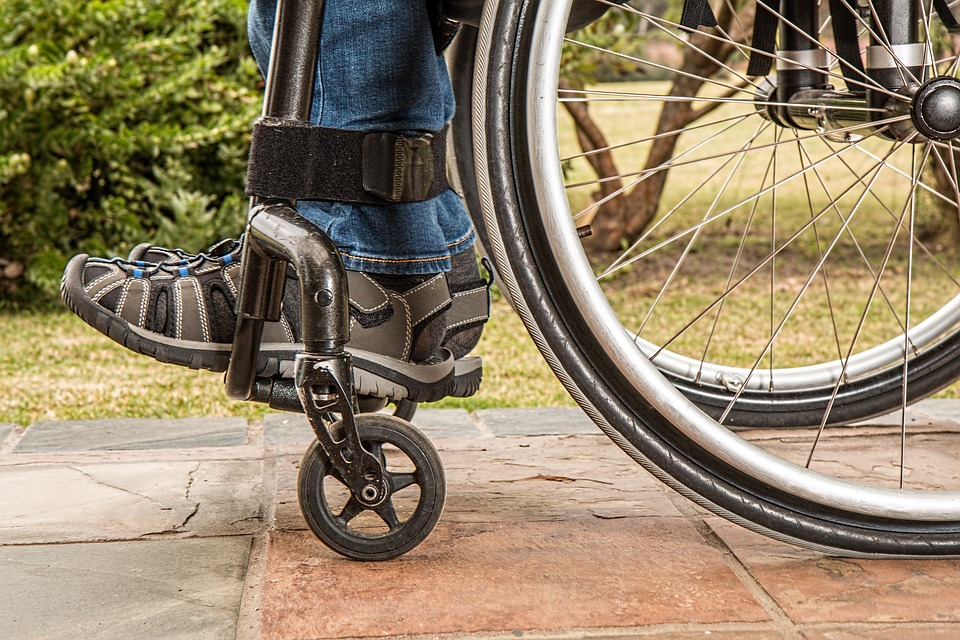The Importance Of Practicing Wheelchair Safety And Maintenance
Share this Article

Wheelchairs are among the most popular mobility solutions for people of all ages. For those who have endured injuries and illnesses that have inhibited their ability to walk safely, either a manual or power wheelchair is generally chosen to assist with mobility. While wheelchairs provide safe and comfortable transport between short distances, users should always be mindful of necessary safety precautions.
As mentioned, wheelchairs are typically safe bets for those with mobility issues. However, maintaining proper upkeep of the wheelchair and ensuring that it is used properly are two activities that should never be overlooked.
Give Your Wheelchair Regular Check-Ups

No, a wheelchair is not a car. But that doesn’t mean it will never require a tune-up. Like a car, a wheelchair has wheels – obviously. And the more those wheels go through natural wear and tear, the more they need to be checked. A wheelchair with properly functioning wheels is one that will provide its user with safe passage from one location to another, time and time again.
Kathy Birkett of Senior Care Corner highly stresses the need to perform wheelchair wheel maintenance. “Check the wheels regularly,” she insists, “Ensure the wheels aren’t loose or have flat tires, which may impact its braking ability. Don’t forget the spokes, as broken spokes can keep the chair from moving freely. In addition, keep the spokes clear of obstructions, such as lap blankets.”
Be Wary of the Surfaces Your Wheelchair Rides Along

The rougher the terrain, the harder it will be on your wheelchair. Wheelchairs are designed to endure both indoor and outdoor use. It goes without saying that most indoor surfaces are smooth and unlikely to present any significant tire damage to your wheelchair. The outdoors, however, are another story.
Wheelchair users and their caregivers should pay extra special attention to the ground in front of them. Watch out for sharp debris such as glass and look out for damage to the road. “Pay close attention to the surface on which your senior is riding to prevent tipping over due to cracks or holes in the pavement or any change in grade, including carpeting,” advises Birkett.
Try to Keep Your Wheelchair Dry

Taking your wheelchair outdoors in wet conditions can present some obvious dangers. As Stellar Transport reminds us, “certain surfaces and weather conditions can increase your risk for wheelchair accidents. Avoid puddles and wet surfaces with an electric wheelchair, which can easily cause the chair to spin, tip or fall over. If you have no other option but to proceed through puddles, do so as slowly and carefully as possible.”
Avoiding water damage and even potential rust ensures the prolonged safe use of your wheelchair. Now, of course, your wheelchair can’t be taken into the shower with you. As we pointed out in our blog about the 3 Important Ingredients of A High-Quality Shower Wheelchair, using a high-quality shower wheelchair is the ideal way for individuals with mobility issues to bathe.
Be Careful of How You Shift Your Weight

Of course, the use of a wheelchair can help to prevent slips and falls. The simple fact that users sit instead of the stand all but eliminates the threat of taking a tumble. Or does it? When seated in a wheelchair, it’s important to maintain your balance by not shifting your weight significantly in any one direction. Cedric Soh of HealthNetCafe.com highlights the need to use casters in order to maintain a proper position in a wheelchair.
“When reaching, leaning, bending sideways or forward, it is important to use the casters as a tool to maintain stability and balance,” he informs, “Finding your proper position is essential to your safety when using a wheelchair. In the beginning, you will want to use the casters to help maintain your balance and stability. Practice conducting a variety of activities, such as bending, reaching, and transferring in and out of your wheelchair. All of these movements will cause a change in the weight distribution of the wheelchair.”
Negotiate Curbs with Caution

A wheelchair can certainly help you to avoid tripping over a curb. However, it can’t necessarily protect you from bumping into one. Soh advises caregivers of wheelchair users to mind the curb. He also encourages wheelchair users to accept the assistance of their caregivers when maneuvering their wheelchairs outdoors.
Some wheelchair users are so adept at maneuvering their chairs that they can pop wheelies over curbs with ease. While you may feel confident in handling curbs on your own, we would not recommend you do so. To maximize your safety, steer your chair around a curb until you find a ramp that enables you to safely board the sidewalk. Alternatively, accept the help of a caregiver to help you get your wheelchair over the curb.
“Curbs should only be negotiated with the assistance of an attendant,” insists Las Vegas’ Preferred Health Choice, “Curbs, steps, and stairways are dangerous obstacles that confront the wheelchair user. When you encounter these obstacles, try to find a way around them by using curb cuts, ramps or designated disabled elevators now available in most areas.”
Keep All Pathways Clear
Yes, wheelchairs are known for helping seniors and individuals with mobility issues to avoid slips and falls. However, wheelchairs don’t work magic. They can’t miraculously hop over obstacles and debris. When indoors, be sure to have all pathways clear of clutter. When outdoors, be mindful of the terrain upon which the wheelchair user is traveling.
“Keep all pathways traveled by the individual in a wheelchair clear and accessible, and remove throw rugs, clutter, and loose electrical cords,” insists Elizz.com, “Arrange furniture to allow a clear path so the wheelchair can easily be moved.”
Make Use of The Seat Belt

Many wheelchair users feel that their seatbelts are unnecessary. This is especially true for users of the manual variety. After all, a wheelchair doesn’t exactly travel at fast speeds. It’s easy to assume that a seat belt isn’t needed for maximum safety. Nevertheless, regular seat belt use is encouraged. Especially when the wheelchair user has limited upper body strength, a seat belt ensures that he/she won’t fall out of the chair.
“Seat belts are meant to keep you securely on your wheelchair seat,” affirms WeCapable.com, “If you have a reduced body balance it is recommended to use a seat belt especially when outside. It is advisable for every wheelchair user to use those seat belts to keep themselves safe especially while descending a ramp or while on an uneven surface. It’s better to be a little cautious than to get hurt.”
Be Aware of Caster Flutter

Wheelchair casters are the small wheels in front of the wheelchair. They are designed to stabilize and steer the wheelchair. The drive wheels are the larger powered wheels at the back of the wheelchair. They propel the wheelchair forward. One of the biggest differences between casters and drive wheels is flutter. Flutter occurs when the casters aren’t properly aligned and start fluttering instead of providing a smooth and steady movement. This can be dangerous.
“As the small wheels attached to the front of your wheelchair base, castors are essential for smooth movement,” affirms Iora with One Medical, “Caster flutter occurs when they aren’t aligned correctly and cause the wheelchair to veer sideways at high speeds, potentially tipping you over. Seek out a professional inspection if you start noticing it.”
Always Secure the Tipping Lever
According to Dr. M. Zakirul Karim, tipping and falling is the most common accident for wheelchair users. “Tipping can be caused by a variety of reasons which include making your wheelchair go to fast, unlocked brakes, slippery surfaces, the sitting stability of the user and hitting a large bump with one wheel causing the wheelchair to become unbalanced,” he writes for The Independent , “To avoid tipping and falling, the tipping lever should be secure when needed and you should beware of your speed around tight corners and on rough terrain.”
Stay Comfortably in Your Seat
Another one of the top culprits for the tipping of wheelchairs is the shifting of the user’s weight. This often occurs when he/she moves forward in the seat, placing more weight on the front portion of the wheelchair. An attempt to pick something up from the floor is a common reason this will happen.
Dr. Karim firmly warns against that. “You will always want to keep in mind that you will never want to attempt to reach for an object if you have to position yourself forward on the seat of your wheelchair,” he writes, “This can be dangerous. Instead, you will want to position the casters and extend them away from the drive wheels, then engage the wheel locks before reaching forward towards the object.”
Accessible Showering for Wheelchair Users
At Forward Day, we had wheelchair users in mind when creating our unique Shower Bay portable shower. Using a shower wheelchair, a user can simply roll into Shower Bay to enjoy a shower with running water. And because Shower Bay can be snapped together in any room of the home where a faucet is nearby, there’s no need for expensive renovations.
If you have any questions about our high-quality shower wheelchairs or our Shower Bay portable showers, please don’t hesitate to contact us to ask them. Give us a call at (831) 607-8885 or email us at info@showerbay.com.
Published: March 26, 2019
Updated: October 31, 2023




